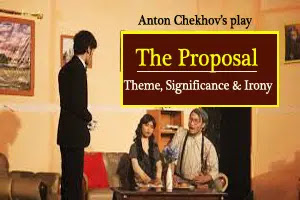"The Making of a Scientist" is a short story written by Richard Feynman, a renowned physicist and Nobel laureate. It recounts Feynman's childhood experiences and his early journey towards becoming a scientist. The story reflects Feynman's curiosity, passion for learning, and unconventional approach to education.
Summary:
"The Making of a Scientist" begins with a young Richard Feynman exploring the world around him with an inquisitive mind. He shares his fascination with everyday phenomena, such as the patterns created by spinning coins and the behavior of ants.
Feynman narrates an incident from his childhood when he disassembles and explores the workings of a radio in his father's store. His father's reaction is not anger but curiosity, as he encourages Feynman's curiosity and provides him with the tools to explore and learn.
Feynman describes his time in high school, where he discovers the joy of solving puzzles and excels in mathematics and science. He talks about his experiences with teachers who both inspire and discourage him, highlighting the importance of passionate educators who nurture students' love for learning.
As Feynman progresses to college, he finds himself in a class where the professor simply reads from the textbook. Dissatisfied, Feynman takes matters into his own hands and delves deeper into the subject matter, seeking a deeper understanding.
Feynman recounts his time at Princeton University, where he encounters brilliant professors and engages in stimulating discussions with fellow students. He emphasizes the significance of surrounding oneself with intellectually stimulating environments to foster growth and development.
The story concludes with Feynman's reflection on the journey that led him to become a scientist. He highlights the importance of curiosity, independent thinking, and the pursuit of knowledge as essential traits for any aspiring scientist.
Critical Appreciation:
"The Making of a Scientist" provides readers with a glimpse into the formative years of one of the greatest scientific minds of the 20th century. Feynman's storytelling captivates the reader, combining personal anecdotes with valuable insights into the scientific mindset.
The story celebrates the power of curiosity and emphasizes the role of supportive mentors and educators in nurturing young minds. Feynman's father, in particular, stands out as a symbol of encouragement, enabling Feynman to pursue his scientific interests.
Feynman's unorthodox approach to education, characterized by his self-driven exploration and passion for independent learning, challenges traditional notions of formal education. His willingness to question and go beyond what is taught in classrooms showcases the importance of personal inquiry and critical thinking.
"The Making of a Scientist" also highlights the impact of intellectual environments and the value of engaging with peers and mentors who inspire and challenge one another. Feynman's experiences at Princeton University underscore the transformative power of stimulating academic communities.
Overall, the story resonates with readers by capturing the essence of what it means to be a scientist—a curious mind, a thirst for knowledge, and an unwavering passion for exploration.
MCQs:
1. Who is the author of "The Making of a Scientist"?
a) Richard Feynman
b) Stephen Hawking
c) Albert Einstein
d) Marie Curie
2. What does the story emphasize as essential traits for a scientist?
a) Creativity and imagination
b) Diligence and hard work
c) Curiosity and independent thinking
d) Communication and collaboration
3. How does Feynman's father react to his son's curiosity about the radio?
a) He gets angry and punishes Feynman.
b) He discourages Feynman's curiosity.
c) He encourages Feynman and provides him with tools to explore.
d) He dismisses Feynman's interest in science
.
4. What subject does Feynman excel in during high school?
a) English literature
b) History
c) Mathematics and science
d) Physical education
5. How does Feynman respond to the professor who simply reads from the textbook?
a) He drops the class and switches to a different subject.
b) He confronts the professor about his teaching methods.
c) He takes matters into his own hands and explores the subject on his own.
d) He forms a study group with his classmates.
6. Where does Feynman attend college?
a) Harvard University
b) Yale University
c) Princeton University
d) Stanford University
7. What role do intellectually stimulating environments play in Feynman's journey?
a) They hinder his progress as a scientist.
b) They provide a platform for competition among students.
c) They foster growth and development through stimulating discussions and interactions.
d) They limit his exploration and creativity.
8. How does Feynman describe his time at Princeton University?
a) Boring and uneventful
b) Competitive and challenging
c) Stimulating and intellectually enriching
d) Isolating and lonely
9. What is the central theme of "The Making of a Scientist"?
a) The importance of family support
b) The challenges of formal education
c) The power of intellectual environments
d) The role of curiosity in scientific pursuits
10. What traits does Feynman's journey towards becoming a scientist emphasize?
a) Obedience and conformity
b) Resilience and perseverance
c) Individualism and independence
d) Open-mindedness and adaptability
11. How does Feynman describe his exploration of the radio?
a) As a destructive act
b) As a form of rebellion
c) As a curious investigation
d) As a mindless pastime
12. What does Feynman emphasize as the driving force behind his scientific journey?
a) Competition with his peers
b) The pursuit of fame and recognition
c) Curiosity and a passion for learning
d) Pressure from his family
13. How does Feynman describe his experiences with teachers in high school?
a) They discouraged his scientific interests.
b) They inspired and nurtured his curiosity.
c) They were indifferent to his academic pursuits.
d) They discouraged independent thinking.
14. What impact does Feynman's father have on his scientific journey?
a) He discourages Feynman's curiosity.
b) He provides the tools and support for Feynman's exploration.
c) He dismisses Feynman's scientific interests.
d) He enrolls Feynman in advanced science programs.
15. What role does independent thinking play in Feynman's approach to education?
a) It is discouraged by his teachers.
b) It is essential for scientific pursuits.
c) It is viewed as a form of rebellion.
d) It hinders his academic progress.
16. How does Feynman describe his fascination with everyday phenomena?
a) Boring and uninteresting
b) Confusing and overwhelming
c) Exciting and captivating
d) Irritating and distracting
17. What does Feynman's experience at Princeton University emphasize?
a) The importance of academic degrees
b) The significance of academic competition
c) The transformative power of intellectual communities
d) The limitations of formal education
18. What lesson can be learned from "The Making of a Scientist"
?
a) The importance of specialized knowledge
b) The value of perseverance in scientific pursuits
c) The limitations of independent learning
d) The significance of passion and curiosity in education
19. How does Feynman respond to teachers who discourage his scientific pursuits?
a) He becomes disinterested in science.
b) He proves them wrong through his achievements.
c) He confronts them about their teaching methods.
d) He switches to a different field of study.
20. What is the tone of "The Making of a Scientist"?
a) Serious and contemplative
b) Excited and adventurous
c) Playful and curious
d) Critical and judgmental
















